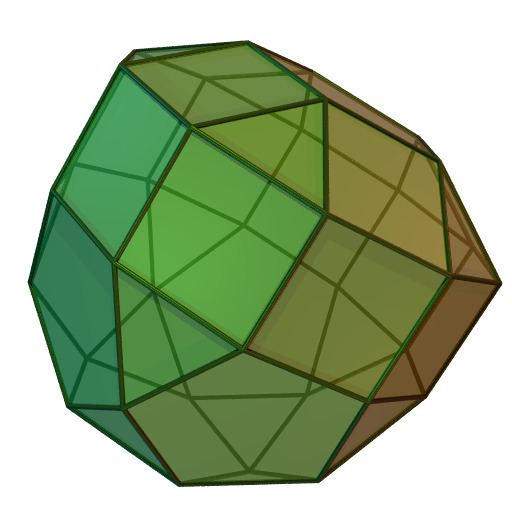Edges 70 Symmetry group C5v | Vertices 35 | |
 | ||
Type JohnsonJ40 - J41 - J42 Vertex configuration 10(3.4)10(3.4.5)5(3.4.5.4)2.5(3.5.3.5) | ||
In geometry, the elongated pentagonal gyrocupolarotunda is one of the Johnson solids (J41). As the name suggests, it can be constructed by elongating a pentagonal gyrocupolarotunda (J33) by inserting a decagonal prism between its halves. Rotating either the pentagonal cupola (J5) or the pentagonal rotunda (J6) through 36 degrees before inserting the prism yields an elongated pentagonal orthocupolarotunda (J40).
A Johnson solid is one of 92 strictly convex polyhedra that have regular faces but are not uniform (that is, they are not Platonic solids, Archimedean solids, prisms or antiprisms). They were named by Norman Johnson, who first listed these polyhedra in 1966.
Formulae
The following formulae for volume and surface area can be used if all faces are regular, with edge length a:
